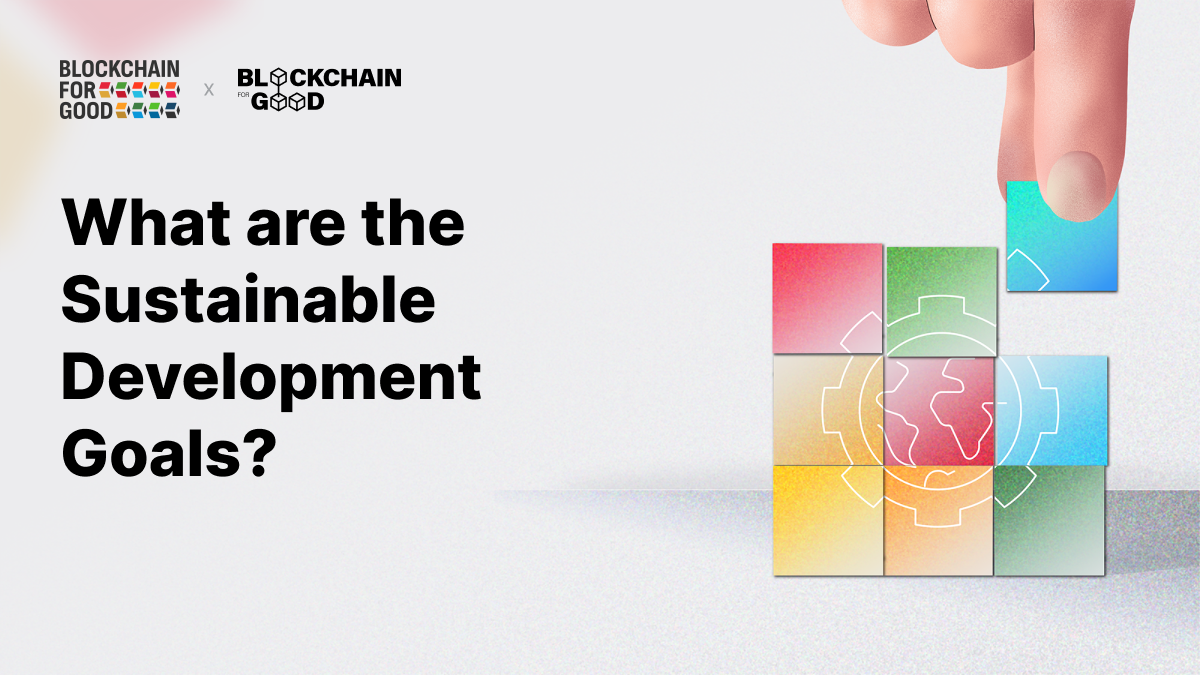
Sustainable Development Goals: A Basis for Technological Innovations
This article is from “Blockchains & Sustainable Development Report” by JacquesAndré Fines Schlumberger Ph.D.. The report is licensed under the CC BY-NC-ND 4.0 license.

How It Started…
"The Sustainable Development Goals are part of the United Nations 2030 Agenda. The United Nations’ sustainable development agenda began in 1998 and was implemented from 2000-2015 with the establishment of the Millennium Development Goals (MDGs). The MDGs were followed by the Sustainable Development Goals (SDGs) for the period 2015-2030, which were defined through discussions between the 193 member states of the United Nations (UN) and civil society."
"The 17 Sustainable Development Goals cover 17 themes, all interconnected and interdependent, based on the three pillars of sustainable development: economic development, social integration, and environmental protection."
Measuring Progress with Indicators
"Each Sustainable Development Goal has several targets, 169 in total, and each target has one or several indicators. These indicators, grouped into three types, make up a system for measuring progress, often macroeconomic:1
- The 130 Level I indicators are clearly defined and have internationally established methodologies for which standards are available. Data are regularly produced by at least 50% of the countries and populations in the regions for which they are relevant.
- The 97 Level II indicators are clear and also have internationally established methodologies, but data are not regularly produced by countries.
- The 20 Level III indicators are those for which there are, to date, no internationally established methodologies or standards available. However, efforts are being made to develop or test methodologies and define common standards.
In addition to their institutional aspect, which does not constrain the Member States while relying on a “Global Partnership for Sustainable Development”, these 17 Sustainable Development Goals constitute a framework for orientation and a common reading grid allowing the management of strategies specific to each stakeholder."
Inclusion of multi-stakeholders
"Implementing the Sustainable Development Goals depends on multi-stakeholder partnerships to mobilize and share expertise, technologies, and financial resources.2 For example, the private sector and economic actors have specific orientation frameworks and initiatives for integrating the 17 Sustainable Development Goals into their strategies, allowing them to precisely measure their contributions to achieving them.3"
"The inclusion of all stakeholders, public, private, and civil, is reflected in the Financing Strategy established by the United Nations General Secretariat for the period 2018-2021. This strategy is composed of three major axes: the alignment of public policies and the financial system with the Sustainable Development Goals; the implementation of financing and investment mechanisms adapted by region and by country; and the contribution of innovation processes, both in terms of products and technologies, to ensure equitable access to financing for all stakeholders.4"
Where Blockchains are considered…
"It is through this third strategic axis that blockchains are today being considered, both for their capacity to transform the financial system and for the traceability, immutability, and ease of access to the data to which they contribute."
"However, in face of this strategy, several voices are being raised to denounce an overly techno-centric approach to the solutions envisaged. Some risks include widening the inequalities between populations equipped and trained in digital practices and those not so equipped, and the encouragement of overconsumption of computer equipment that requires scarce resources."
"Thus, in order to bring together all the stakeholders, it has been necessary to agree on an interpretation of the modalities of sustainable development that is sometimes inconsistent with the scientific and social findings on the limits of our models of society."
"In this context, the system of Sustainable Development Goals is not only a system for measuring progress, common to 193 countries, with which to acknowledge the scope and urgency of global issues. SDGs also form the basis for social and technological innovations whose ambitions cannot be limited to existing indicators.5"
References
1“Tier Classification for Global SDG indicators”, United Nations, March 29, 2021, https://unstats.un.org/sdgs/iaeg-sdgs/tier-classification/
2SDG 17 Target 16: “Enhance the Global Partnership for Sustainable Development, complemented by multistakeholder partnerships that mobilize and share knowledge, expertise, technology and financial resources, to support the achievement of the Sustainable Development Goals in all countries, in particular developing countries”, https://sdgs.un.org/goals/goal17
3These guidelines and tools are gathered under the SDG Compass project, implemented by the Global Reporting Initiative - GRI, the UN Global Compact, and the World Business Council for Sustainable Development - WBCSD, https://sdgcompass.org/
4“Synopsis: The Secretary-General’s Strategy for Financing the 2030 Agenda for Sustainable Development (2018 –2021)”, https://www.un.org/development/desa/financing/fr/node/837
5“Blockchains & Sustainable Development Report”, JacquesAndré Fines Schlumberger Ph.D., Association de loi 1901 Blockchain for Good - France, blockchainforgood.fr, September 2022.